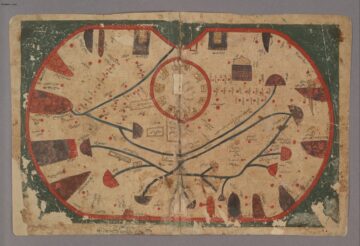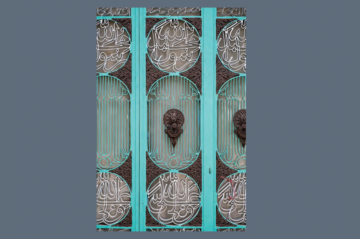A Prayer for Spiritual Elevation and Protection: Ibn ‘Arabi’s al-Dawr al-a‘la (Hizb al-wiqaya): Study, translation, transliteration and Arabic text is the first of three publications by Dr. Suha Taji-Farouki reflecting her recent research supported by the Institute’s Department of Academic Research and Publications.
Dr. Taji-Farouki’s research focuses on aspects of Ibn ‘Arabi’s legacy in the modern world. A second title, Beshara and Ibn ‘Arabi: A Movement of Sufi Spirituality in the Modern World (Oxford, 2007), explores the application of Ibn ‘Arabi’s teaching in the context of contemporary western spirituality. A third, still in progress, examines ongoing intra-Muslim debates concerning aspects of Islamic doctrine through a study of the life of Ibn ‘Arabi’s shrine-complex in Damascus, Syria. These three titles represent original approaches to little-explored aspects of Ibn ‘Arabi’s influential legacy.
The subject of A Prayer for Spiritual Elevation and Protection (Anqa Publishing in association with the Muhyiddin Ibn ‘Arabi Society, Oxford, 2006) is a widely-used prayer by Ibn ‘Arabi. The Dawr al-‘ala (‘The Most Elevated Cycle’), also known as the Hizb al-wiqaya (‘The Prayer of Protection’), is an example of the prayers transmitted from Sufi masters to their disciples. It consists of 33 verses, invoking protection through Divine Names and phrases from the Holy Qur’an(also Koran. Arabic term meaning, ‘recitation’ or ‘scripture’): Muslims believe that the Holy Qur’an contains divine revelations to the Prophet Muhammed received in Mecca and Medina over a period of… More.
Ibn ‘Arabi has been a source of inspiration and a reference-point for the Muslim mystical tradition for many centuries, and there is a growing body of critical editions, translations and analyses of his works. Yet, little attention has been paid to the devotional dimensions of his corpus. This book provides a definitive edition of the Arabic text of the prayer, based on a substantial number of manuscript copies, a translation and a transliteration.
Combining an examination of written sources with extensive fieldwork, Dr. Taji-Farouki tells the long history of the prayer, identifying people in the chains of transmission attached to it. Of particular interest are the major figures in Islamic scholarship and mysticism who have been associated with it, and perceptions of its properties. Based upon many testimonies and from her own observations, she also demonstrates the continuing use of the Dawr al-‘ala today in very diverse milieux.






